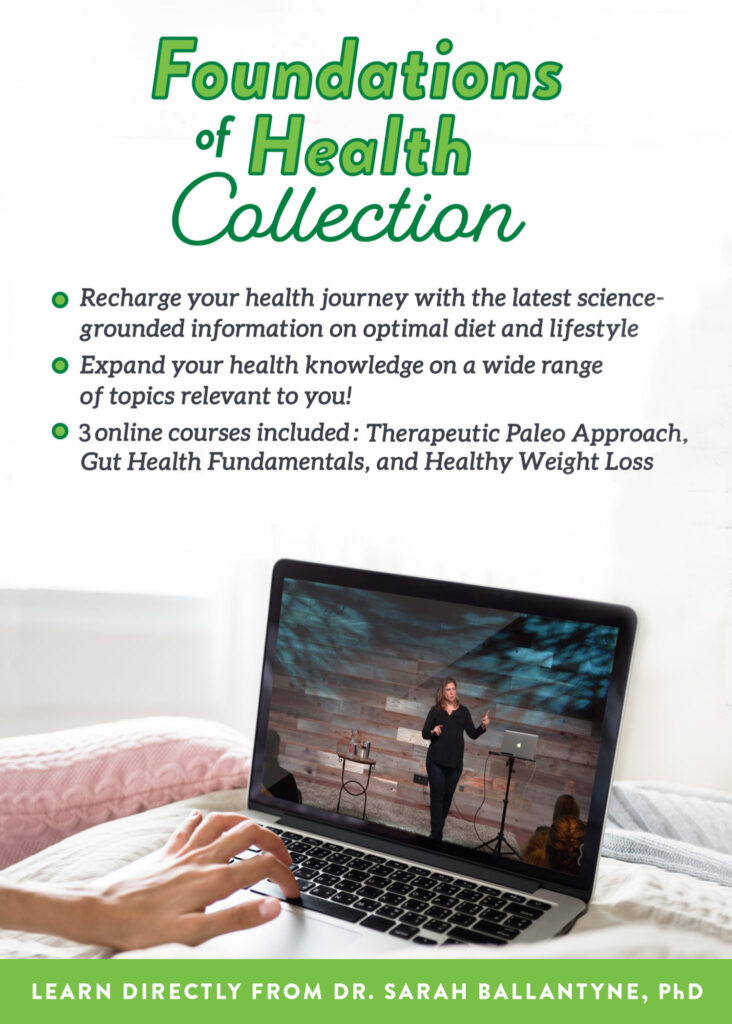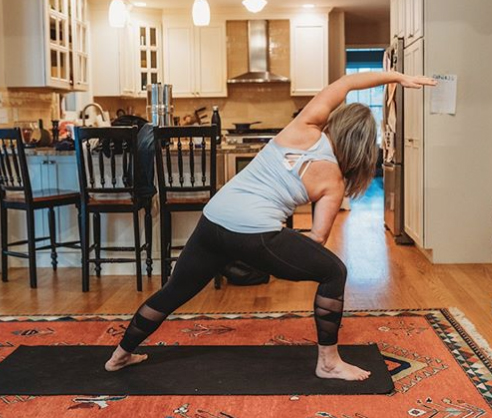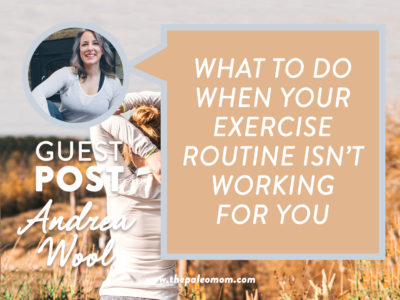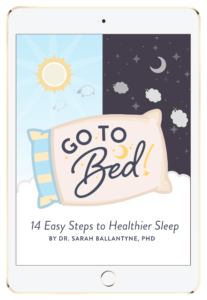
Andrea Wool is the founder and creator of Autoimmune Strong. Andrea is a personal trainer, certified by the National Academy of Sports Medicine and a graduate of The National Personal Training Institute. Additionally, she is a Nutritional Therapy Practitioner (NTP), certified from the Nutritional Therapy Association. Prior to this, she attended Middlebury College for a BA and UCLA for an MA in Sociology.
Andrea developed the Autoimmune Strong program based on her own experiences adapting the pricinples of strength training exercise to her own body, having been diagnosed with multiple autoimmune conditions. Once she realized that this program improved the quality of life not just for her, but others as well, she created Autoimmune Strong, so she could share her knowledge with the world.
Andrea is a mom of two young boys, who inspire her every move. Her mission in life is to help others regain their bodies the way she regained hers. To learn more about Andrea’s personal story, click here.
We all know that we need to exercise, right? We hear it on TV, read about it in lifestyle magazines, and even our doctors tell us- exercise is an important part of being healthy. But for people living with autoimmune disease, finding the right kind of exercise can be a very tricky task indeed.
Save 80% Off the Foundations of Health
Expand your health knowledge on a wide range of topics relevant to you, from how to evaluate scientific studies, to therapeutic diet and lifestyle, to leaky gut and gut microbiome health, to sustainable weight loss, and much more!!!

Here’s why: exercise (and any physical movement for that matter)- is a double-edged sword for people living with autoimmune disease. Move too much? Your body will be overwhelmed and overtaxed, and you are more likely to experience an exercise-induced symptom flare-up. But move too little? The pain and discomfort of inertia will set in and you won’t feel good in your body either.
This is due to exercise intolerance- which is a very common side effect of autoimmune disease. A person experiences exercise intolerance when they push their body’s to do more physical activity than their body can handle. And then- when the body exceeds the level of exercise tolerance? It gets overwhelmed with symptoms like pain, exhaustion, fatigue, nausea, dizziness, insomnia, gastrointestinal symptoms, anxiety, mood swings, panic attacks. So, we get forced into taking rest and recovery time, so our body can heal from the intensity of these symptoms. Sometimes this recovery cycle can be quick, but often it can be lengthy and very uncomfortable.
And then what happens? Well, one of two things. Either- we go back to the exercise program or physical activity that exceeded our exercise tolerance levels in the first place, and the cycle begins all over again. OR, we get stuck in a cycle of fear when it comes to exercise and/or physical activity, and it prevents us from wanting to do anything at all- because we become scared of the exercise-induced symptoms happening again. So we move as little as possible, worried that too much physical activity will put you back on the couch again. Simple everyday tasks like going to the grocery store become more and more difficult and can be overtaxing to both our physical and emotional state.
 Neither of these are good options. So, what do we do?
Neither of these are good options. So, what do we do?
Here’s the good news. No matter which of these categories we fall into, we are still perfectly capable of exercising and moving our bodies in a way that doesn’t exacerbate our fear or our flare-ups. In the same way that AIP is a diet that nourishes and supports the body- we need an exercise program that does the same thing. We don’t need a traditional exercise program that pushes our bodies to the max and focuses on losing weight or creating six pack abs. Instead, we need to use exercise to help us feel better in our bodies, have more energy, and help us move about the world with joy and ease.
This is a radical notion. In the same way that AIP is an untraditional method of “diet”- Autoimmune Strong is an untraditional method of “fitness”- with the purpose of helping your body feel good again.
Here are the 5 Autoimmune Strong foundations that you can apply to your own fitness routine to help nourish and support your body.
1. Listen to your body’s distress signals.
Traditional fitness encourages us to push through the pain in order to get results. For people living with autoimmune disease and chronic illness, pushing through the pain is often what over-taxes our body and triggers a symptom flare-up. So, I encourage you not to ignore your body’s distress signals. Do as much exercise as you can without pushing yourself into a state of pain, fatigue, or exhaustion.
2. Let go of the “I should” and the “I used to” belief system.
Often, when living with autoimmune disease, we long for our “old” life (life before diagnosis). This happens often when we think about exercise. We think about what we “used to do” and we often try to recreate that in our current life. However- what we “used to do” doesn’t often match the needs of our current body. Or, we look around at what other people are doing, and we tell ourselves, “I should be able to do that”- even when our bodies very clearly show us that we can’t. This can spiral into a lot of negative self-talk, which has a huge impact on our mood, our confidence, and our feelings about our bodies. So- shedding that idea of what we “should” be able to do and what we “used to” be able to do is an important first step, and celebrate your body where it is now. That acceptance will have a positive impact on more than just your work in the gym.
 3. Don’t give up.
3. Don’t give up.
Just because you can’t push yourself hard and you can’t do what you used to be able to do doesn’t mean that you can’t or shouldn’t do anything. That fear, that pain, that feeling of being discouraged- it can stop you from moving altogether- and that’s not helpful for your self-care. You have to find a way to exercise- with a focus on strength, flexibility, and mobility. These are the fitness elements that provide the most bang for your buck- and will help you feel the best in your body.
4. Start Small.
It’s important to not push yourself too hard, right? So, start with a small exercise program. The definition of “small” depends on who you are, what your relationship to exercise has been in the past, and how severe your flare-ups are. Some people can handle 30 minutes of exercise, some people need to start with just a minute or two. No matter what the length of time is- start with something low intensity. And if it feels easy? Good! Pay attention to your body’s signals. Are you having a flare-up? Feelings of exhaustion? Fatigue? Nausea? Sugar Cravings? If yes, then you still did too much and you need to back off even more. IF you feel good after doing this level of exercise consistently, every day or so, then good news! You can progress.
5. Build a progression.
Just because you start small doesn’t mean that you are destined for a life of this kind of exercise only. Start small and make sure your body can handle it. Then, you can build a progression. Over time, you can add more intensity- more difficult exercises, longer duration, etc. But the key is to make sure your body can handle the intensity! If not- you need to back off again. It is a slow climb and it can feel frustrating at times- but you will find that this is the consistent way to keep exercise in your life in a way that helps you feel better in your body!
Exercise is a necessary and important element to becoming Autoimmune Strong! You can certainly adapt your own exercise program to meet your needs using these 5 tips- but if you would like someone to show you the way, Autoimmune Strong is here to help! Click here to learn about the only online exercise designed specifically for people living with autoimmune disease, by a personal trainer who lives with 4 autoimmune diseases herself. Exercise doesn’t have to be difficult and painful- so give this a try and see how the right kind of fitness can help you feel better, stronger and more energetic today.









